
Edward Osborne Wilson, usually cited as E. O. Wilson, is an American biologist, naturalist, and writer. His biological specialty is myrmecology, the study of ants, on which he has been called the world's leading expert.
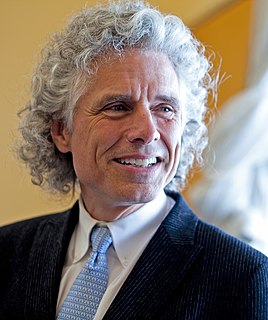
Steven Arthur Pinker is a Canadian-American cognitive psychologist, linguist, and popular science author. He is an advocate of evolutionary psychology and the computational theory of mind.
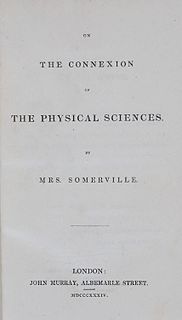
Popular science is an interpretation of science intended for a general audience. While science journalism focuses on recent scientific developments, popular science is more broad-ranging. It may be written by professional science journalists or by scientists themselves. It is presented in many forms, including books, film and television documentaries, magazine articles, and web pages.

James Gleick is an American author and historian of science whose work has chronicled the cultural impact of modern technology. Recognized for his writing about complex subjects through the techniques of narrative nonfiction, he has been called "one of the great science writers of all time". He is part of the inspiration for Jurassic Park character Ian Malcolm.
The Royal Society Science Books Prize is an annual £25,000 prize awarded by the Royal Society to celebrate outstanding popular science books from around the world. It is open to authors of science books written for a non-specialist audience, and since it was established in 1988 has championed writers such as Stephen Hawking, Jared Diamond, Stephen Jay Gould and Bill Bryson. In 2015 The Guardian described the prize as "the most prestigious science book prize in Britain".
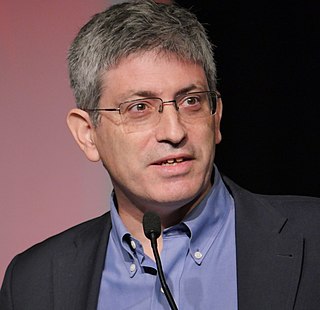
Carl Zimmer is a popular science writer, blogger, columnist, and journalist who specializes in the topics of evolution, parasites, and heredity. He is the author of many books and contributes science essays to publications such as The New York Times, Discover, and National Geographic.He is a fellow at Yale University's Morse College and adjunct professor of Molecular biophysics and biochemistry at Yale University. Besides his popular science writing, Zimmer also gives frequent lectures, and has appeared on many radio shows, including National Public Radio's Radiolab, Fresh Air and This American Life.
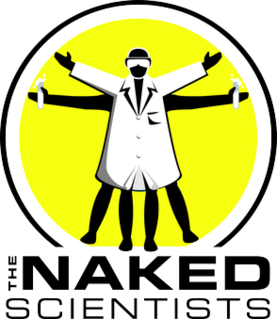
The Naked Scientists is a one-hour audience-interactive science radio talk show broadcast live by the BBC in the East of England, nationally by BBC Radio 5 Live and internationally on ABC Radio National, Australia; it is also distributed globally as a podcast.
Philip J. Davis was an American academic applied mathematician.

Paul Bloom is a Canadian American psychologist. He is the Brooks and Suzanne Ragen Professor of psychology and cognitive science at Yale University. His research explores how children and adults understand the physical and social world, with special focus on language, morality, religion, fiction, and art.

Science communication is the practice of informing, educating, sharing wonderment, and raising awareness of science-related topics. Science communicators and audiences are ambiguously defined and the expertise and level of science knowledge varies with each group. Two types of defined science communication are science outreach and science "inreach". An example of inreach is scholarly communication and publication in scientific journals.
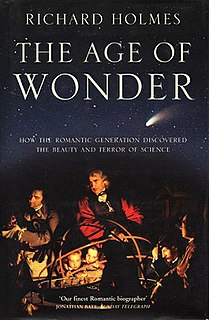
The Age of Wonder: How the Romantic Generation Discovered the Beauty and Terror of Science is a 2008 popular biography book about the history of science written by Richard Holmes. In it, the author describes the scientific discoveries of the polymaths of the late eighteenth century, and describes how this period formed the basis for modern scientific discoveries. It won the 2009 Royal Society Prize for Science Books, the 2009 National Book Critics Circle Award for General Nonfiction, and the 2010 National Academies Communication Award.

Cordelia Fine is a Canadian-born British philosopher, psychologist and writer. She is a Full Professor of History and Philosophy of Science at The University of Melbourne, Australia. Fine has written three popular science books on the topics of social cognition, neuroscience, and the popular myths of sex differences. Her latest book Testosterone Rex won the Royal Society Science Book Prize, 2017. She has authored several academic book chapters and numerous academic publications. Fine is also noted for coining the term 'neurosexism'.

Mark Andrew Miodownik is a British materials scientist, engineer, broadcaster and writer at University College London. Previously, he was the head of the Materials Research Group at King's College London, and a co-founder of Materials Library.

The Information: A History, a Theory, a Flood is a book by science history writer James Gleick published in March 2011 which covers the genesis of our current information age. It was on The New York Times best-seller list for three weeks following its debut.
The Wavewatcher's Companion is a 2010 science book by Gavin Pretor-Pinney.

Roger Ronald Highfield is an author, science journalist, broadcaster and Science Director at the Science Museum Group.
Christine Kenneally is an Australian-American journalist who writes on science, language and culture. Trained as a linguist, she has written for The New York Times, the New Yorker, Slate, New Scientist, and Australia's Monthly, among other publications. She is a great-granddaughter of JJ Kenneally, an early popularizer of Australian bushranger Ned Kelly.
Physics outreach encompasses facets of science outreach and physics education, and a variety of activities by schools, research institutes, universities, clubs and institutions such as science museums aimed at broadening the audience for and awareness and understanding of physics. While the general public may sometimes be the focus of such activities, physics outreach often centers on developing and providing resources and making presentations to students, educators in other disciplines, and in some cases researchers within different areas of physics.
Rebecca Katherine Priestley is a New Zealand academic, science historian, and writer. She is an Associate Professor in Science in Society at Victoria University of Wellington.

The Particle at the End of the Universe: How the Hunt for the Higgs Boson Leads Us to the Edge of a New World is a non-fiction book by American theoretical physicist Sean M. Carroll. The book was initially released on November 13, 2012 by Dutton.













